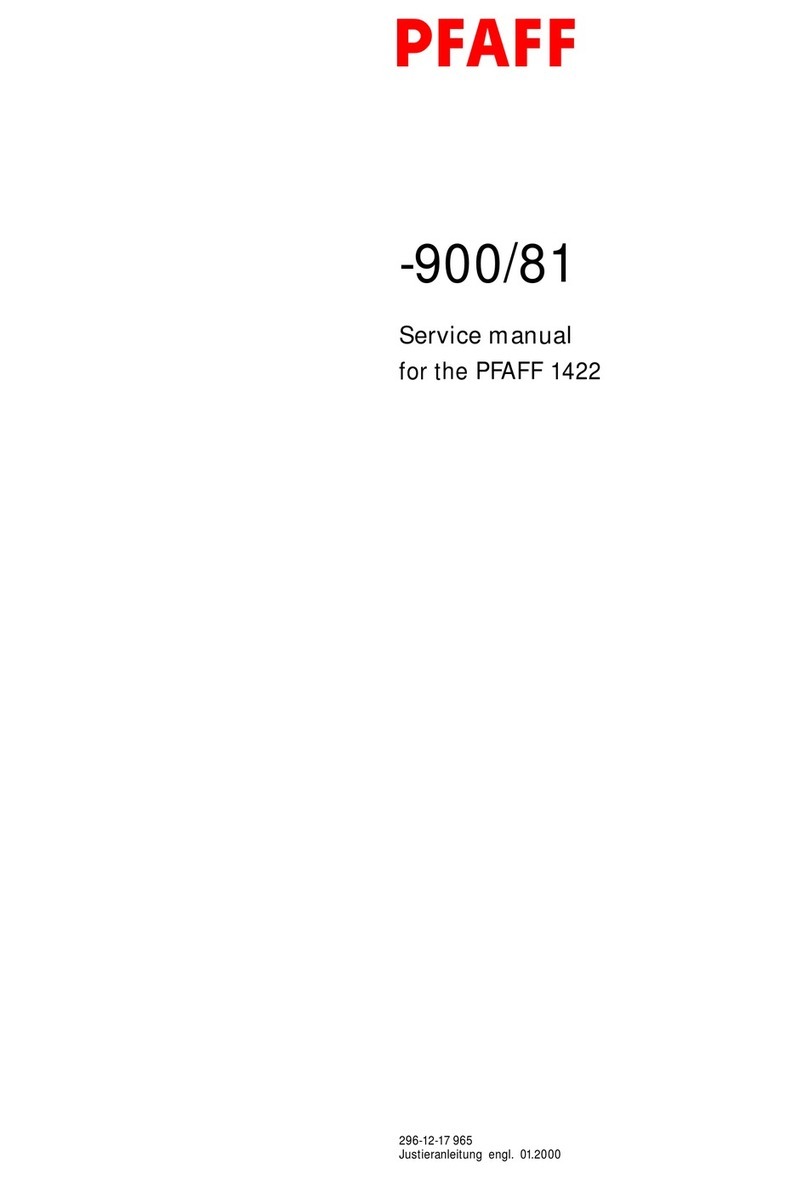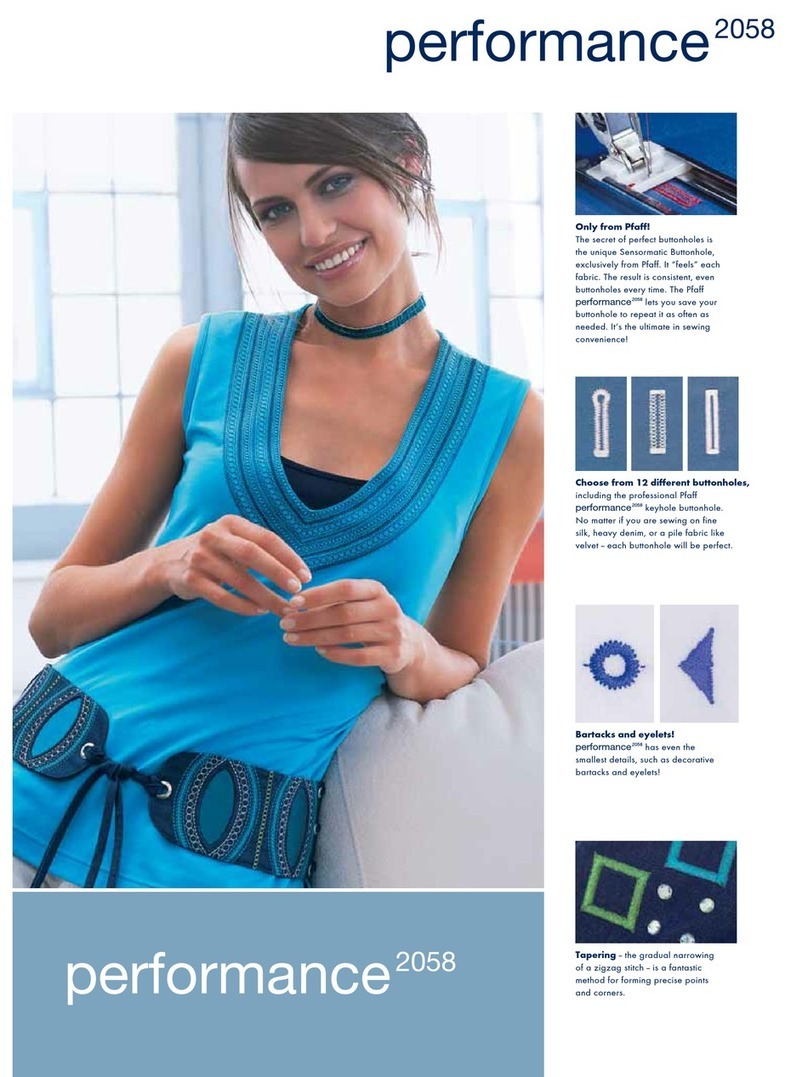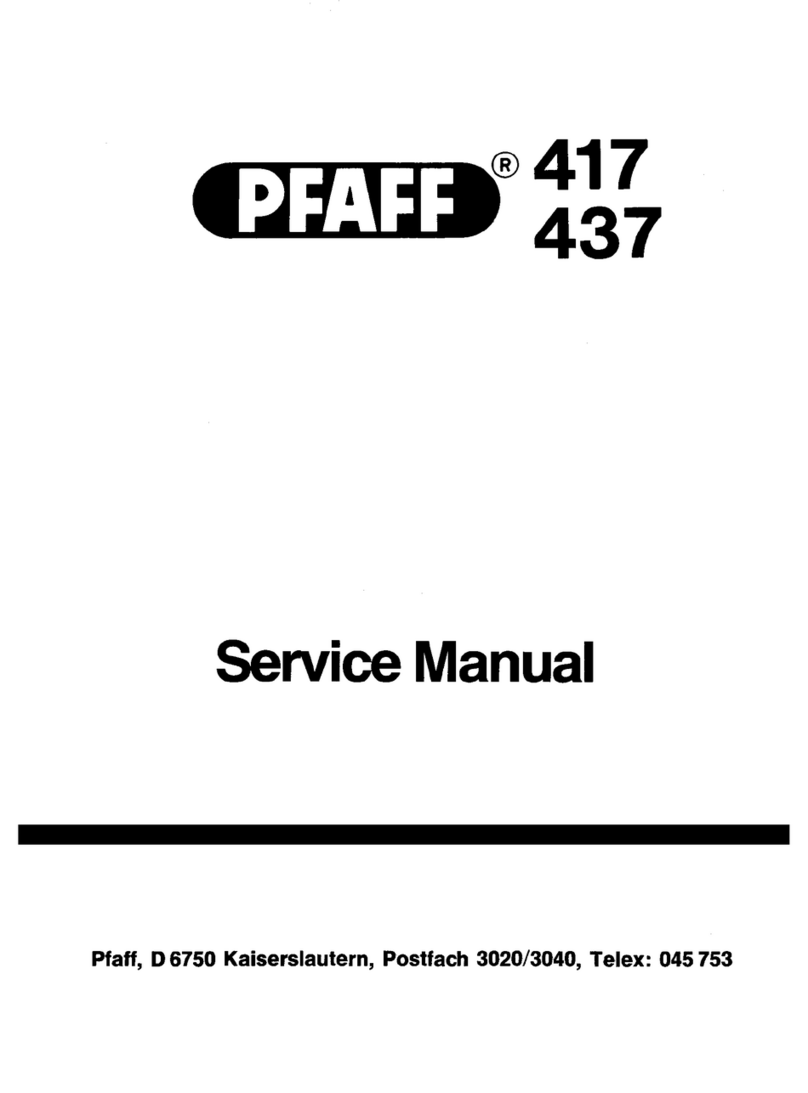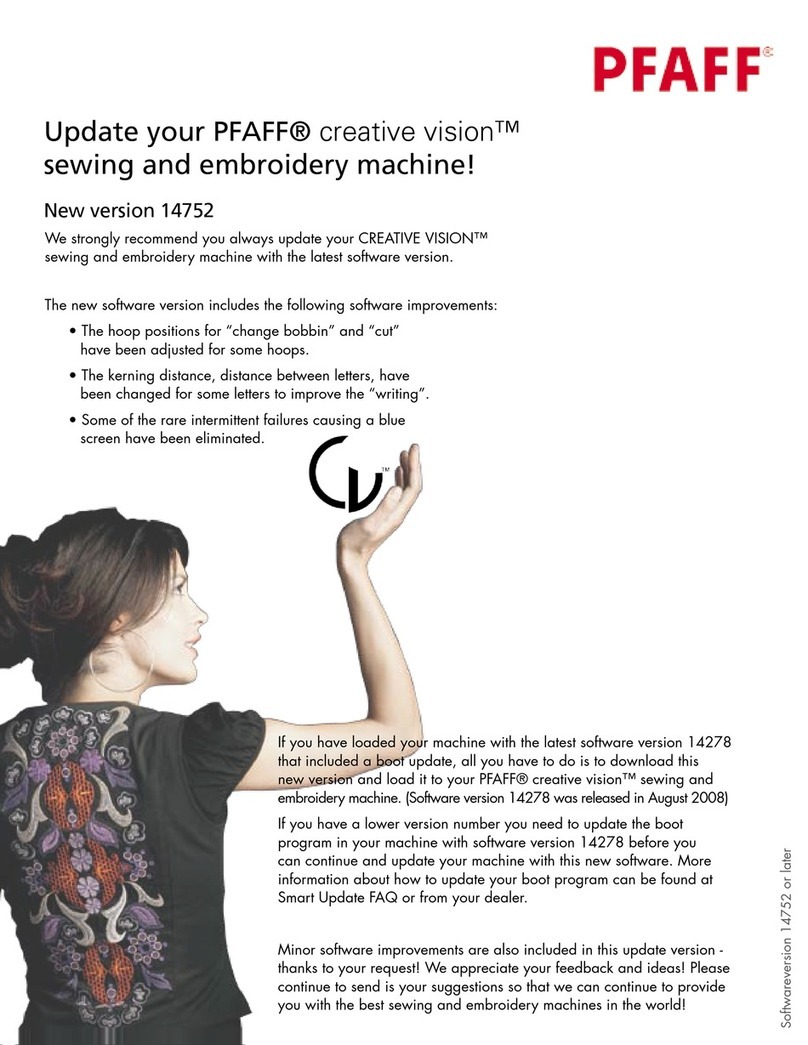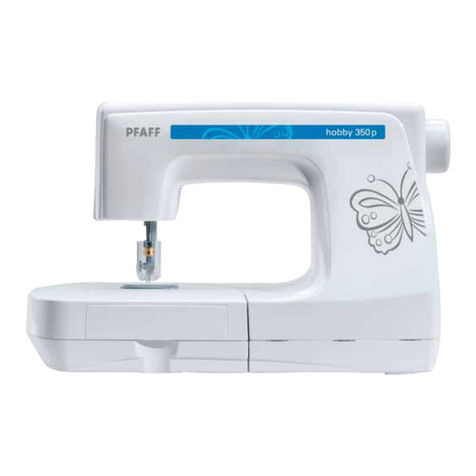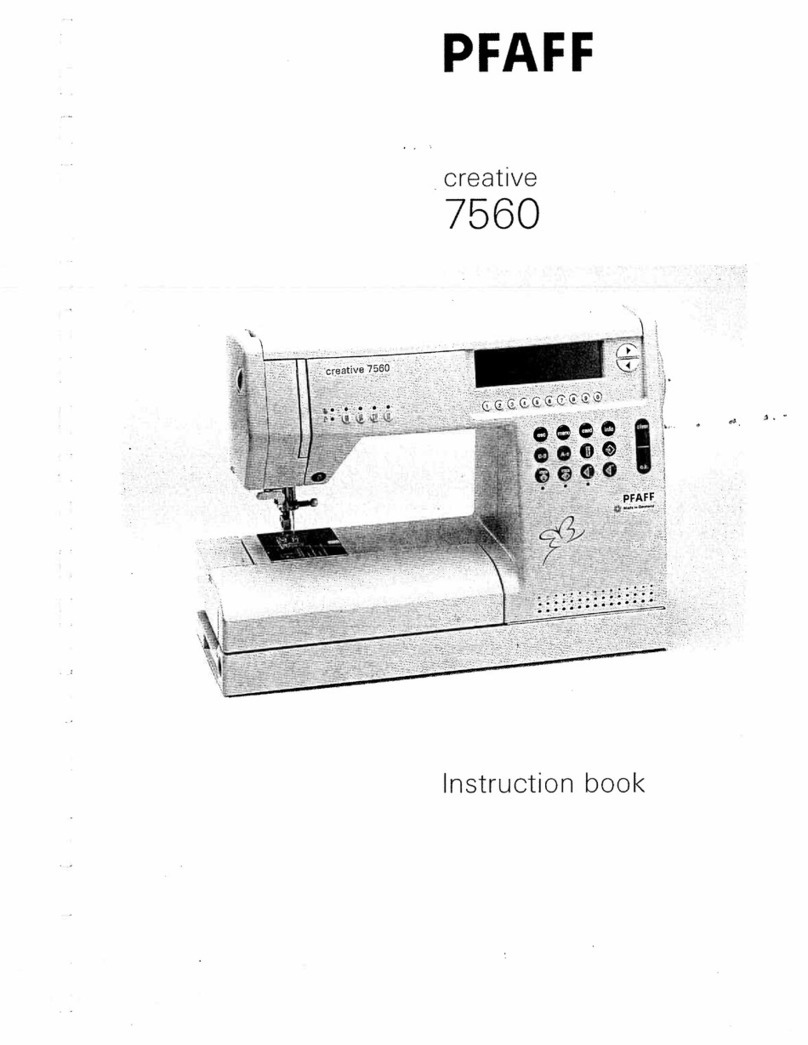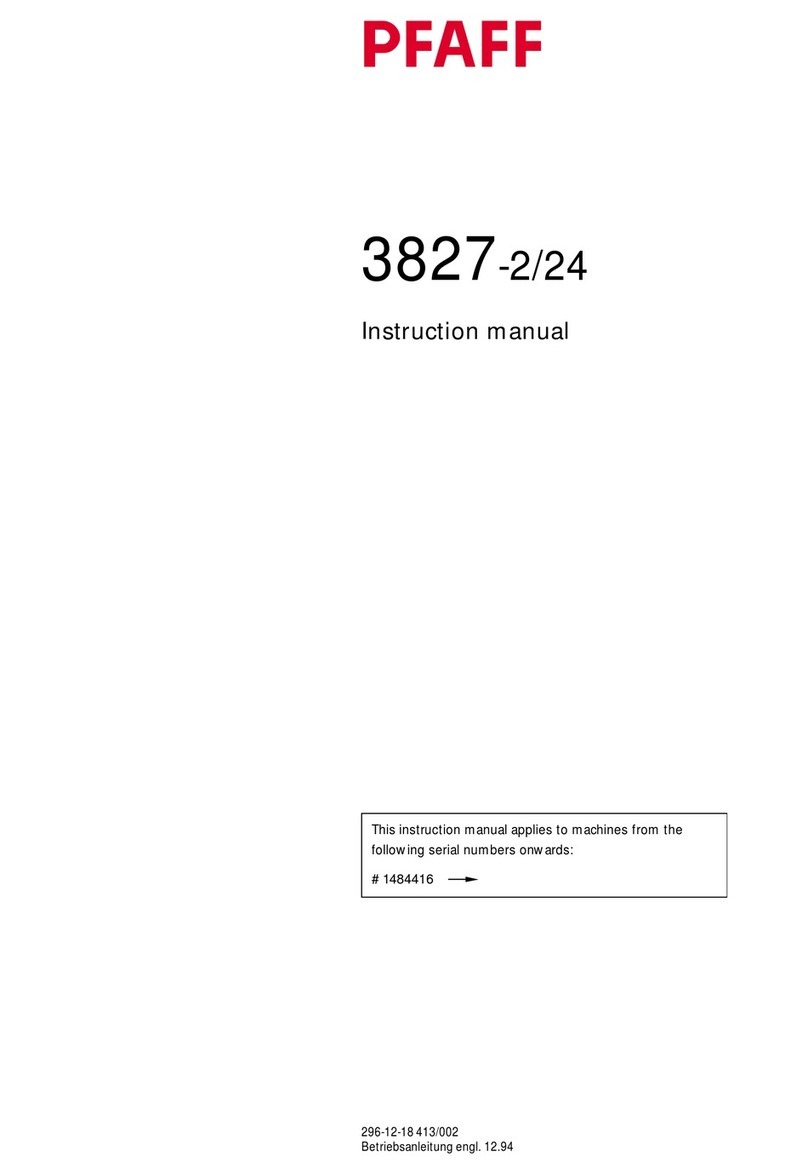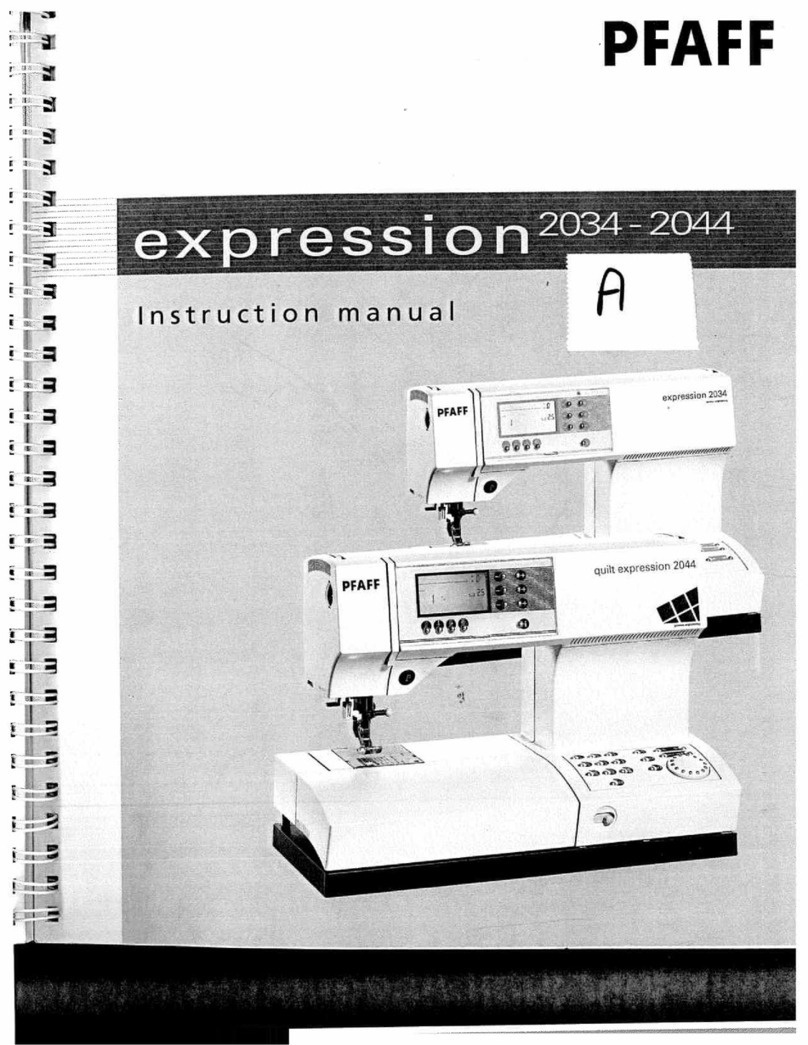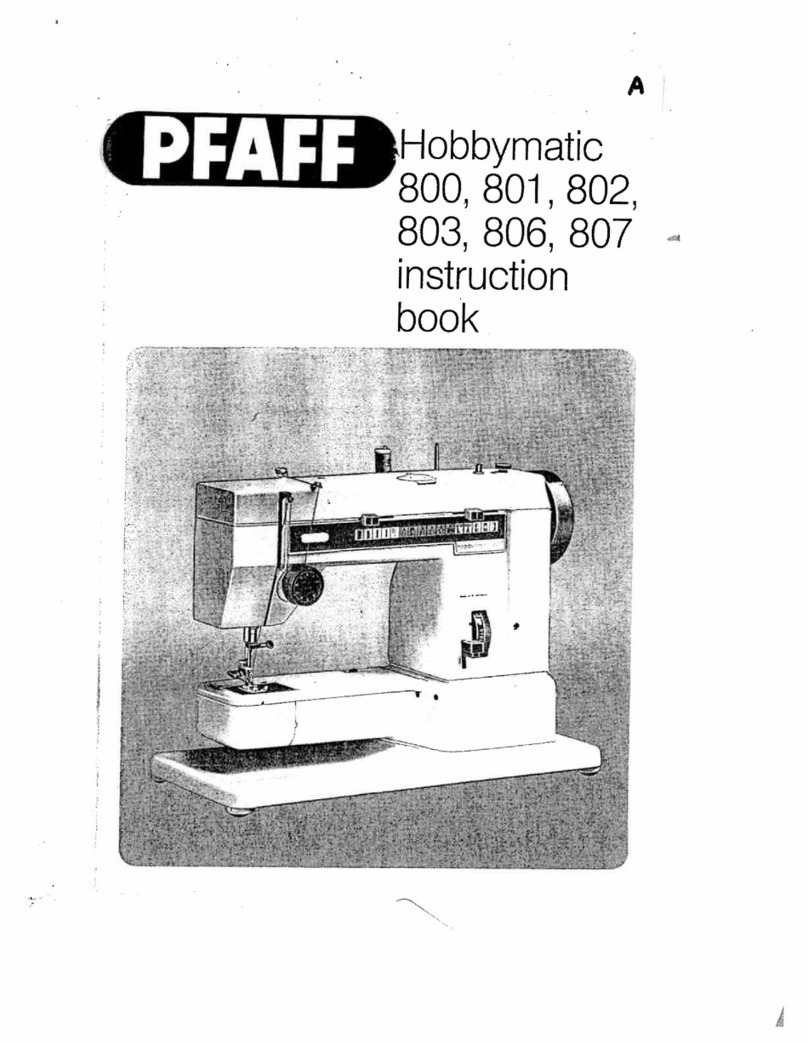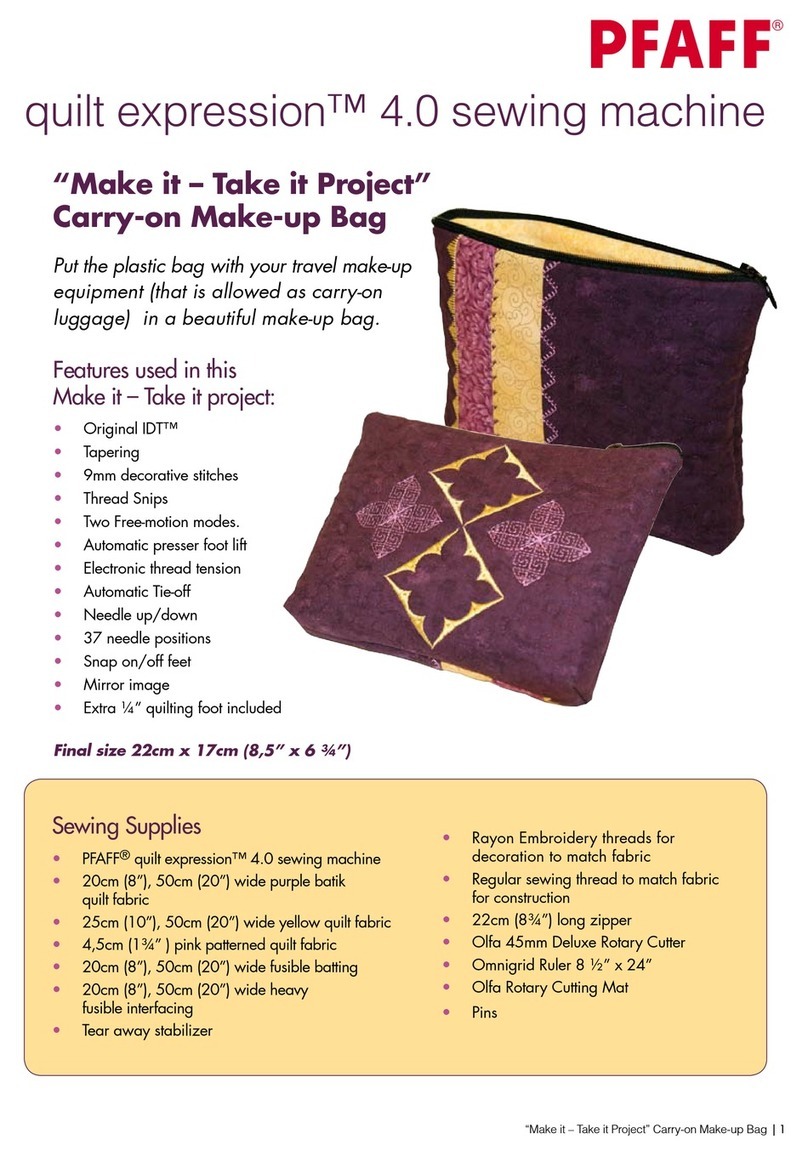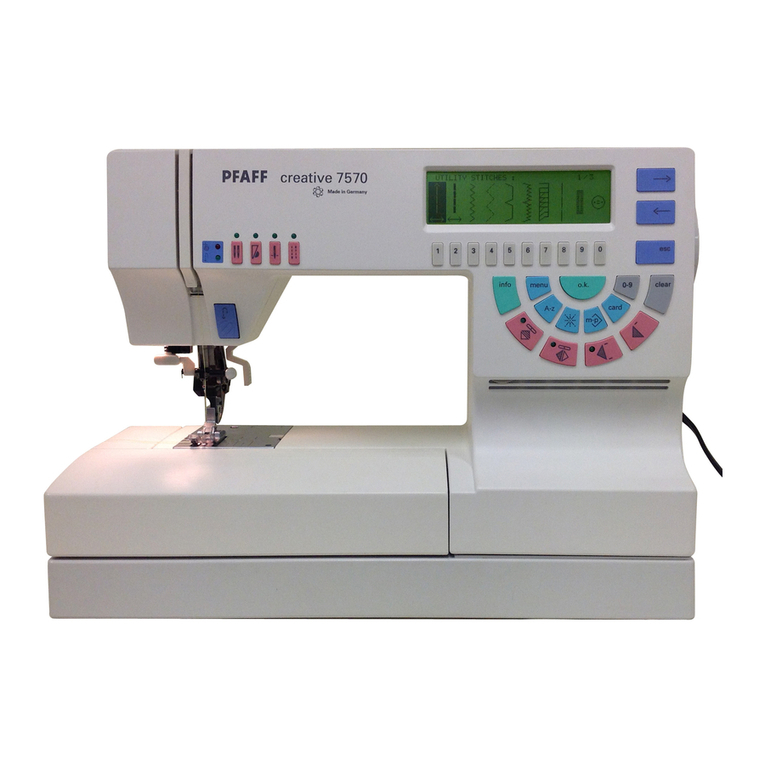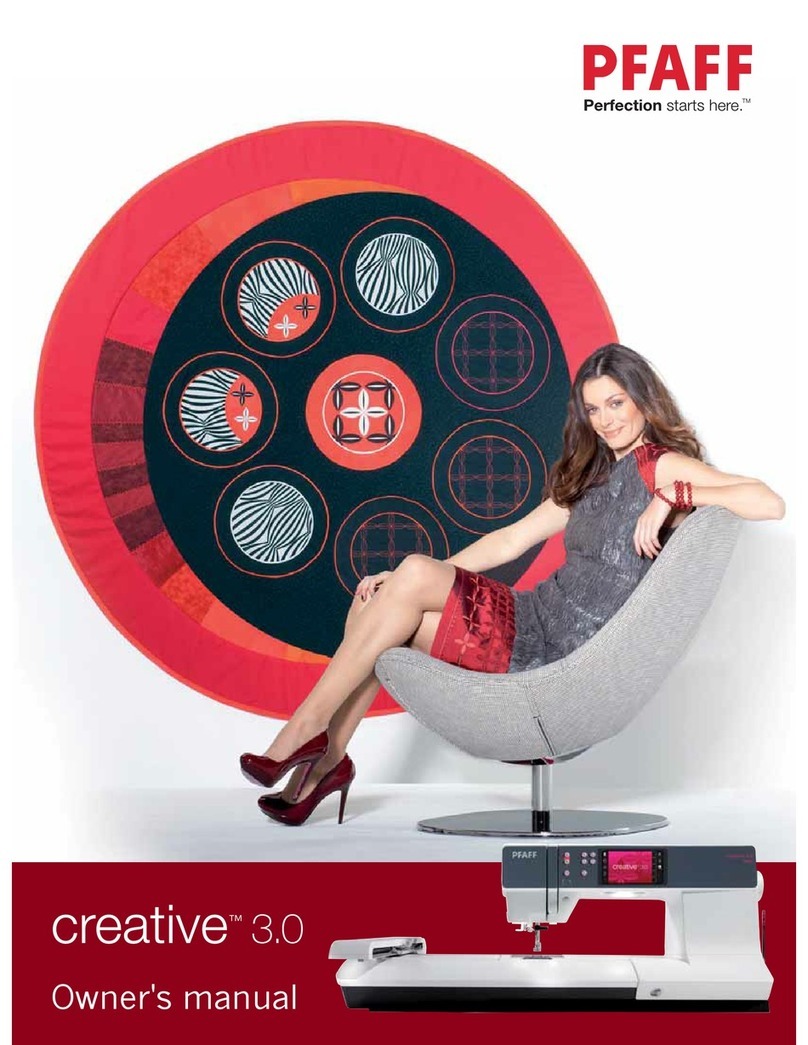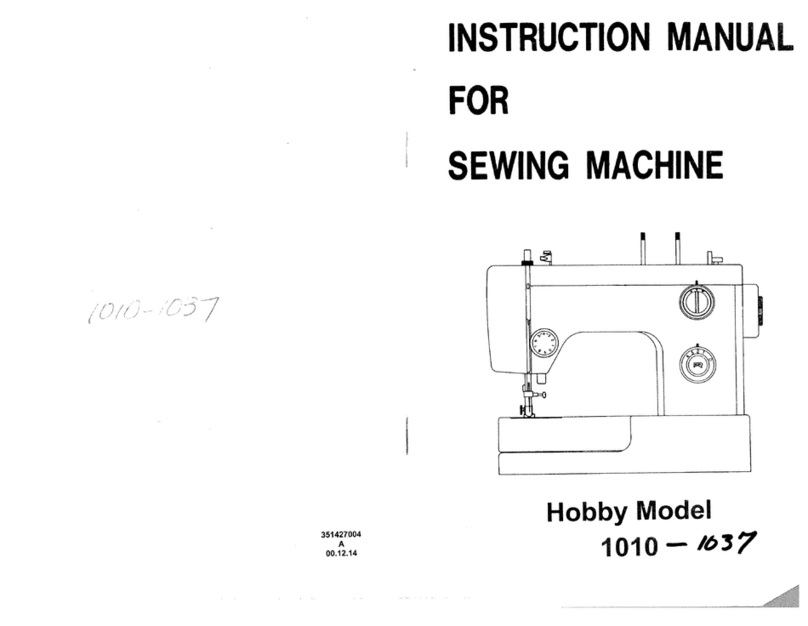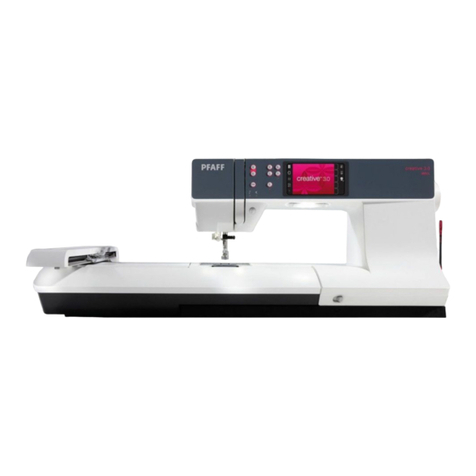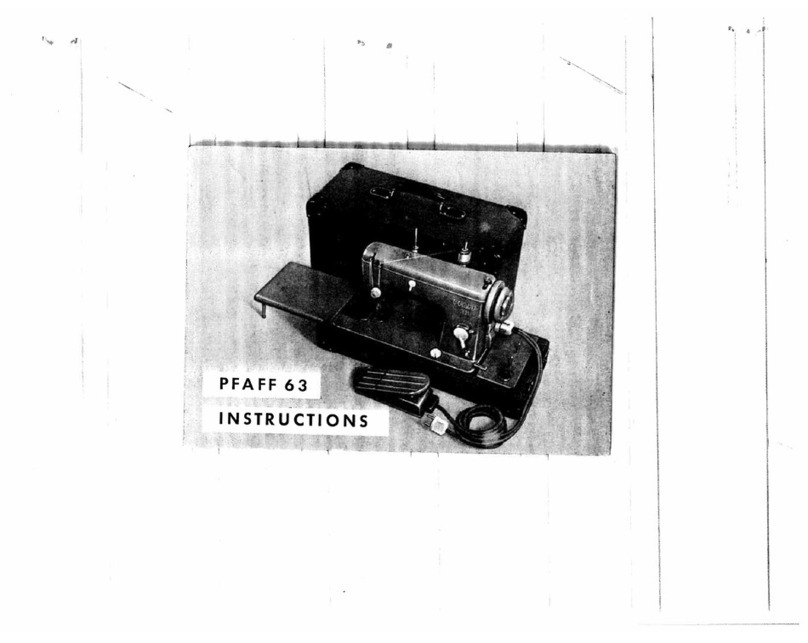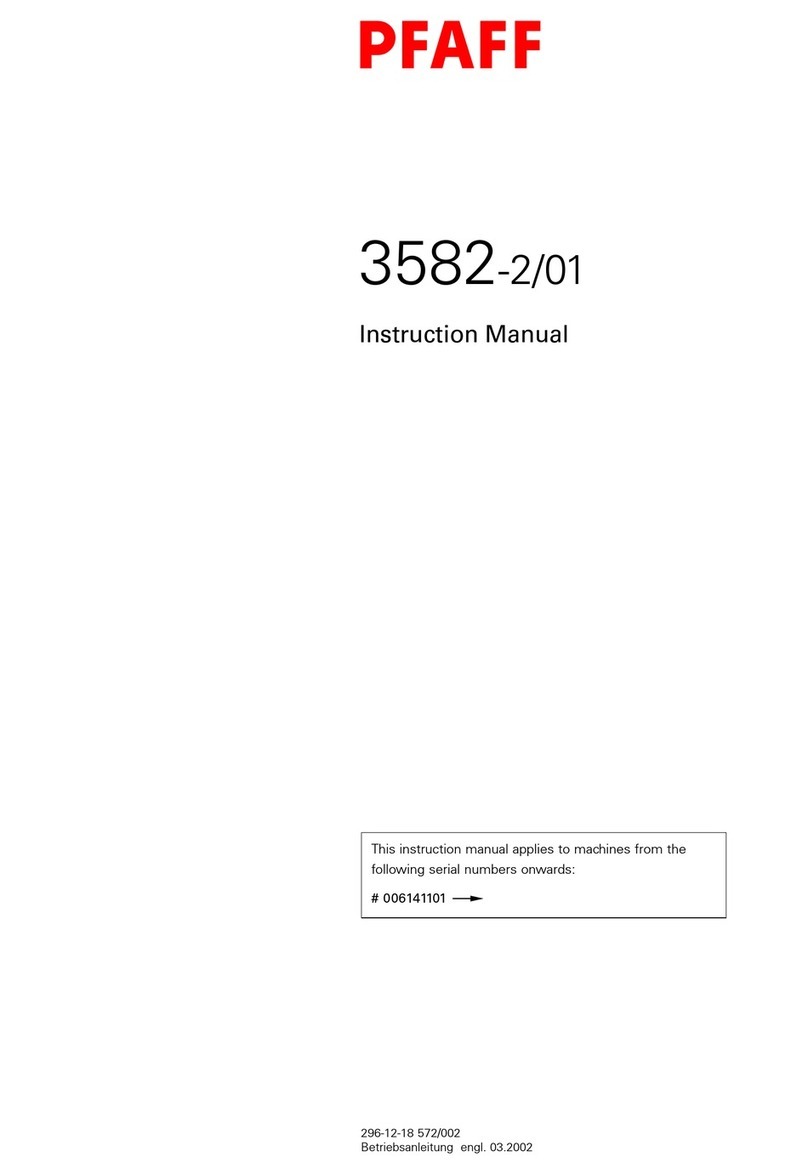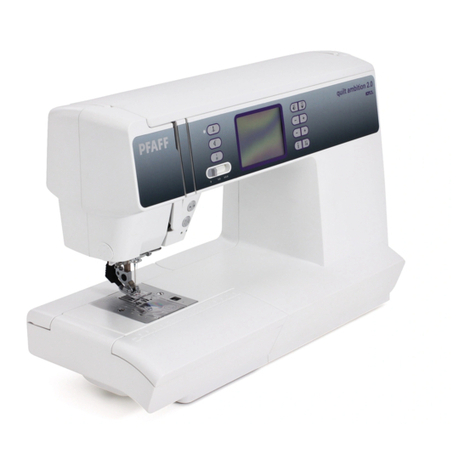1
Page
Table of contents 1
Foreword 3
Notes on the sewing machine 4
Specifications of the coverlock 4772 5
Adjustment gauge of the coverlock 4772 6
Dismantling the housing of the coverlock 4772 7
Requirements for adjusting the coverlock 4772 11
Needle bar height and needle penetration points
1. Setting the needle bar height 14
2. Setting the needle penetration points 15
Feeding system
3. Setting the main feed dog in the sewing direction with regard to the needle plate 16
4. Setting the feed dog movement 18
5. Setting the stitch length 20
6. Setting the stitch length adjustment knob 21
7. Setting the differential feed dog 22
8. Setting the differential feed-dog height 23
9. Setting the presser bar height 24
10. Setting the presser bar eccentrics 25
Setting the lower overedge looper
11. Setting the height of the lower overedge looper 27
12. Setting the timing of the lower overedge looper 28
13. Setting the looper-to-needle clearance 30
14. Setting the lateral clearance to the right needle 32
Setting the upper overedge looper
15. Setting the height of the overedge looper 33
16. Setting the lateral clearance to the right needle 34
17. Setting the timing of the upper overedge looper 35
18. Setting the clearance between the upper and lower overedge looper 36
Setting the two thread chainstitch looper
19. Setting the height of the two thread chainstitch looper 37
20. Setting the lateral clearance to the cover stitch needle (D) 38
21. Setting the looper-to-needle clearance 39
22. Setting the timing of the two thread chainstitch looper 40
Setting the needle guards
23. Setting the rear needle guard 42
24. Setting the front needle guard 43
25. Setting the needle guard for the cover stitch needles 44
Setting the upper and lower blades
26. Setting the lower blade 45
27. Setting the upper blade 46
28. Setting the lower blade bracket 47
29. Setting the chaining finger 48
Setting the looper thread guides
30. Setting the looper thread guide of the lower overedge looper 49
31. Setting the looper thread guide of the upper overedge looper 49
32. Setting the looper thread guides of the two thread chainstitch looper 50

